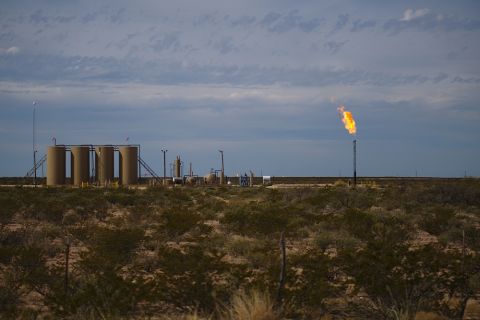
An operator on BP’s Cedar Creek 2 wind farm in Colorado. (Source: BP Plc)
In my previous article, I discussed how all energy companies typically get lumped together as a group and what they, as an industry, need to be doing in the face of the growing area of Environmental, Social and Governance (ESG). In this article, I continue to focus on the “E” in ESG for energy companies. And, despite the actual, wide-ranging diversity of energy companies, I’ll cover three priorities that need to be addressed that get less attention and are more behind-the-scenes.
RELATED:
ESG For Energy: Three Things Companies Should Be Doing (Part 1)
Now, more than ever, there are growing expectations on the industry in the ESG domain. All energy companies around the world will be asked (and eventually will be told) to meet ESG market-driven forces and regulatory requirements. ESG is here, and ESG strategy, planning and execution are absolutely needed.
Embedded within these ESG expectations is a growing demand for more renewable energy. Startup and larger energy companies alike will continue to balance demand and supply. Despite public perception, the energy industry will continue to safely integrate renewable energies into the existing energy infrastructure. The industry may be known for being slow to react to changing times, but that's a result of keeping to tried and true practices of safe operation. Operational innovations, like hydraulic fracking and horizontal drilling, have been around for a long, long time.
Yet this truism of being slow to react still applies to energy companies and it's no more apparent than when you see how value chains are managed from end to end. Energy company application landscapes are often very much like the inner workings of a refinery—a webbed network of units and pipes in all directions where select few understand what each part does in the end-to-end flow. IT landscapes are full of older applications, multiple large-scale platforms and redundant and duplicate systems.
There are valid reasons for energy companies having the IT landscapes that they have—most of which are economic. Mergers and acquisitions are a major reason. Companies lead with operational integration followed by organizational rationalization. Remaining personnel have limited budgets to streamline systems.
Business complexity is another reason. Every energy company owns their own unique parts of the energy value chain, and wherever their ownership ends, supplier and customer ownership begins. Ownership entry and exit points vary and only add to the complexity.
On top of this, most software, including major ERP systems, are better suited for discrete manufacturing industries. Energy production is a continuous flow business. Production volumes are tracked 24/7. However, tying those volumes to owners with varying interests, at moving average prices, is not done 24/7. Inventory ownership of product constantly flowing in a pipe involves a calendar and a clock.
Companies will be able to handle the expansion and integration of renewable energy value chains into their existing operations. But, energy companies are less prepared in the non-operational space. Energy companies need to improve their front-, mid- and back-office functions now before adding to their existing landscape.
Below are three corporate initiative areas companies should focus on when implementing ESG strategies:
- Value Chain Integration
- Energy companies need to troubleshoot problem areas in their existing end-to-end processes
- Look for cross-functional, cross-business line improvements with an eye towards renewable energy expansion
- Focus on the ever-challenging accounting and operations integration (i.e., book-to-physical functions)
- Value Chain Simplification
- Work backwards in the value chain process to simplify, which is easier said than done, in an era of bigger and better data
- Place an emphasis on contracts and contract pricing. The goal here is to reduce office support and office support issues, which almost always "roll downhill"
- Value Chain Visibility
- Simplified processes and streamlined organizations require improved communication and value chain visibility, provided by technology
- Digital transformation, the popular buzzword trend, can facilitate further simplification of the process and IT landscape
- Cloud platforms like Salesforce, when done correctly, can provide a common platform for simplified energy company processes
Sustainability and renewable energy businesses are going to be incorporated into existing energy companies more and more in the future. Adding complexity on top of complexity is not a recipe for success. Energy companies should be preparing for this wave by streamlining their existing business processes before ESG strategy and planning becomes ESG execution. Now is the time to simplify your value chain office functions, streamline and optimize them now before emerging ESG/renewable value chains compound existing problems.
Tony Jones is a director in Opportune LLP’s process and technology practice. Tony is an experienced consulting executive with over 20 years of experience in project delivery for the energy industry and is knowledgeable with liquid and gas supply, trading, refining, terminalling, pipelines and distribution, as having executed several projects for Fortune 500 oil and gas clients. He has worked in all aspects of a project life cycle, from strategy setting and business case development, to project management, though to production support, for business process improvement and software implementations.
Recommended Reading
Post $7.1B Crestwood Deal, Energy Transfer ‘Ready to Roll’ on M&A—CEO
2024-02-15 - Energy Transfer co-CEO Tom Long said the company is continuing to evaluate deal opportunities following the acquisitions of Lotus and Crestwood Equity Partners in 2023.
Report: Crescent Midstream Exploring $1.3B Sale
2024-04-23 - Sources say another company is considering $1.3B acquisition for Crescent Midstream’s facilities and pipelines focused on Louisiana and the Gulf of Mexico.
Pembina Pipeline Enters Ethane-Supply Agreement, Slow Walks LNG Project
2024-02-26 - Canadian midstream company Pembina Pipeline also said it would hold off on new LNG terminal decision in a fourth quarter earnings call.
TC Energy’s Keystone Back Online After Temporary Service Halt
2024-03-10 - As Canada’s pipeline network runs full, producers are anxious for the Trans Mountain Expansion to come online.
Waha NatGas Prices Go Negative
2024-03-14 - An Enterprise Partners executive said conditions make for a strong LNG export market at an industry lunch on March 14.





